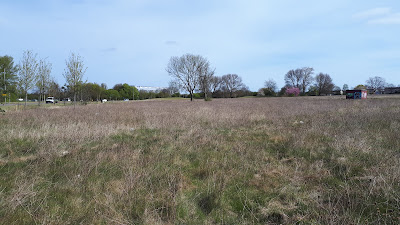Last year with the lockdown I missed the spectacle that is Spurn during migration. I hadn't visited since October with the various restrictions on movement and that had to be addressed. The weather forecast wasn't great, with drizzle and rain all morning and quite cold at 5oC. I first made a stop at Kilnsea Wetlands. Sand Martins and two Swallows hunted low over the water. A Cuckoo called.
What is it about Shelduck and hay bales?
Summer plumage Bar-tailed Godwit.
The bird to look for was a drake Garganey. A birder who had travelled from the Peak District pointed it out to me, initially hiding in the shoreline, only the top of its head visible. Later it gave much better views. It was a first for me, I've seen Garganey before, but never a drake.
Drake Garganey.
Linnet with nicely marked chest.
I saw 9 Wheatears spread around the fields.
This Redshank landed momentarily in front of the hide, but moved on to join the rest at the roost.
Meadow pipit.
Little Ringed Plover.
Shelduck.
Brown Hares.
The lone, long staying Whooper swan. It has an odd mark on the neck.
Oystercatchers.
I moved onto Beacon Ponds. A Common Sandpiper and a distant Greenshank were the highlights.
On the ponds and scrapes at Kilnsea Wetlands there were some Bar-tailed Godwits and Whimbrel feeding together.
This odd looking pipit was also in the area. It was pale and with a plain head and back, with neat chest stripes. It turned up to be a Meadow Pipit.
Meadow Pipit.
One of many Whimbrels today.
Sparrowhawk.
Little Egret.
First Swift.
I met up with Bethan Clyne and we walked around the triangle. When at Long Bank, I spotted a Great White Egret in amongst a reedy pond. It then flew to Canal Scrape but it didn't last much there. I can't believe I saw a Little Egret just an hour before the GWE this year!
Large flocks of Brent Geese moved back and forth. This group was feeding by the Crown and Anchor.
As I returned to Kilnsea Wetlands, I saw that the Great White Egret had returned there, and I managed some shots. The rain had become stronger and the light was quite poor.
Nice to see the plumes of its breeding plumage.
A Cuckoo called and showed quite well, but with reeds in front and behind, it proved hard to focus. It was also raining quite hard, had to keep wiping my camera lense.
Cuckoo.
The rain had soaked my shoes and gloves and after my lunch in the car I just couldn't warm up so it was time to call it a day. But, despite the weather, what a day! A total of 64 sp today and added 18 sp to my year list. I can't wait to go back!




















































